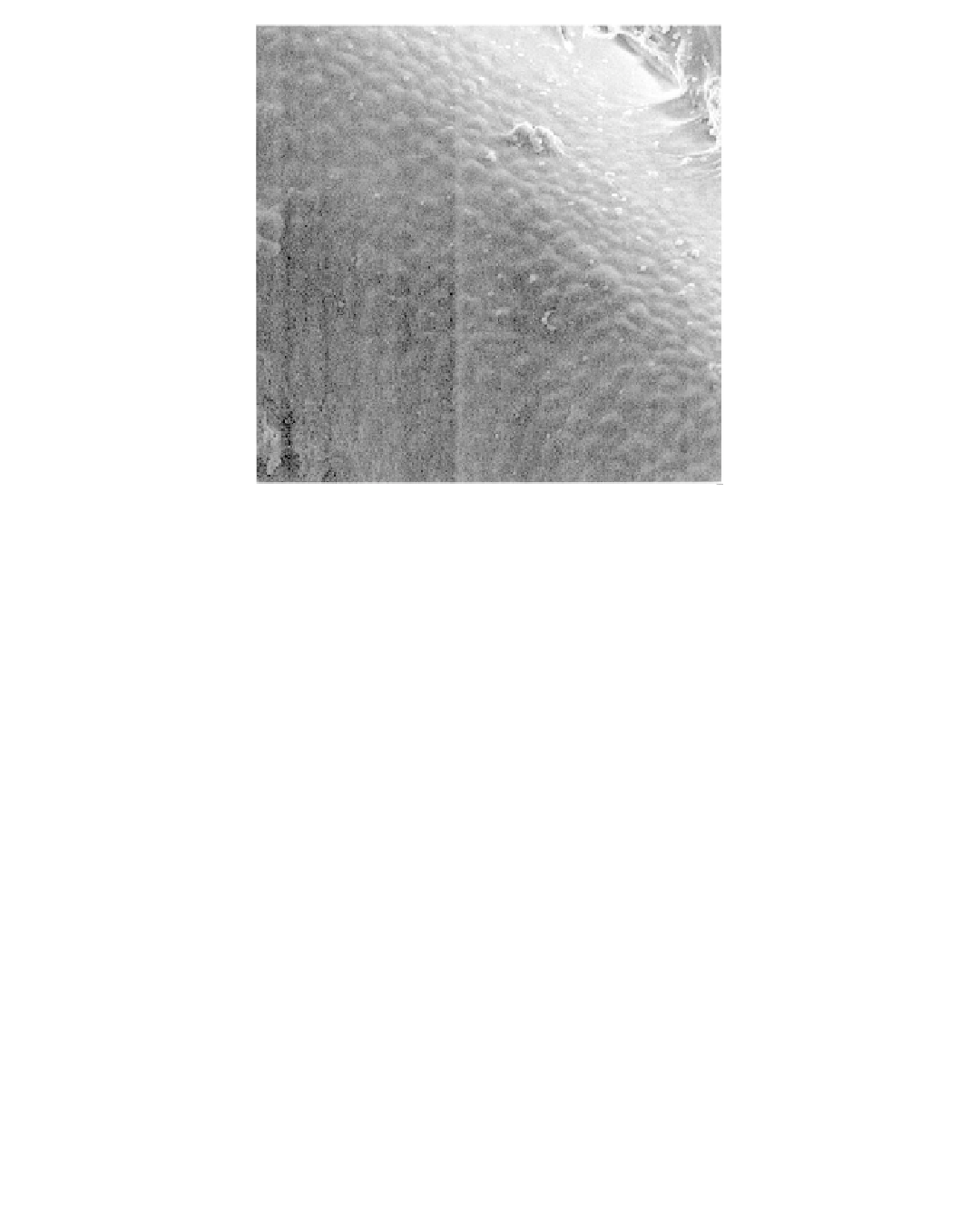Biomedical Engineering Reference
In-Depth Information
FIGURE 17.18
Luminal surface of a synthetic vascular graft lined with endothelial cells that formed spon-
taneously after 3-month implantation into the carotid artery of a goat.
17.8 CONCLUDING REMARKS
There are a wide variety of blood-contacting devices, ranging from blood bags to heart valves, from
intravenous catheters to vascular prostheses. Although a number of these devices perform satisfacto-
rily, some display poor blood compatibility, which means they provoke unacceptable responses upon
cont act wit h blood. T The su r faces of such inadequate devices lead to coag ulat ion, infl ammation, hemo-
lysis, or infection. For instance, devices that induce coagulation will only function properly when
systemic anticoagulant therapy is applied simultaneously. This increases the risk of hemorrhage for
the patient. Furthermore, the permanently implanted devices as well as the devices with large blood-
contacting surfaces (hemodialysis fi lters, tubing of heart-lung machine and cardiac-assist devices)
show signifi cant activation of the immune system and consequently induce a moderate but chronic
infl ammatory response. The thrombogenicity of and infl ammation on the surface compromise the
function of blood-contacting devices, ultimately resulting in removal. In this chapter, several strate-
gies have been discussed that aim to prevent coagulation and infl ammation at synthetic surfaces.
Currently most of these strategies are based on physicochemical manipulation of the surface. It is
surprising that our increasing knowledge of blood and the immune response, together with an exten-
sive understanding of polymer chemistry and its applications, has not culminated in the development
of new materials that exhibit true blood compatibility. Of course, modifi cations of traditional mate-
rials like PTFE (Tefl on), PET (Dacron), and polyurethanes have resulted in improved performance
upon contact with blood, however, it is remarkable how few new biomaterials with excellent blood
compatibility have been introduced over the last decades. Recently, increasing number of researchers
use tissue engineering techniques to (i) construct surfaces with a functional self-regenerating endo-
thelial cell layer or (ii) produce fully biological blood-contacting tissues in the laboratory. This is an
exciting development that, without doubt, will lead in the formation of near perfect blood-contacting
devices and tissues in future. Until then, the detailed study of blood-biomaterial interactions will
require a multidisciplinary approach to solve the problems with current blood-contacting devices.

